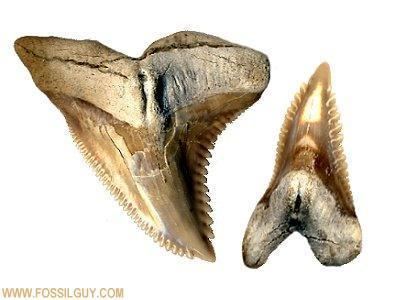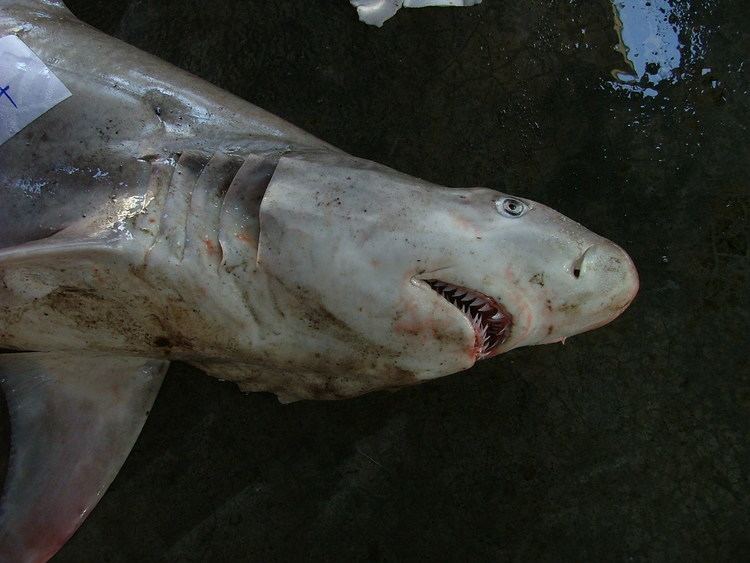Subclass Elasmobranchii Rank Species | Phylum Chordata Superorder Selachimorpha | |
Similar Shark, Hemipristis, Hemigaleidae, Sicklefin weasel shark, Hooktooth shark | ||
Potentially associated fossil snaggletooth shark teeth and vertebrae from sc
The snaggletooth shark, or fossil shark (Hemipristis elongata), is a species of weasel shark, in the family Hemigaleidae, and the only extant member of the genus Hemipristis. It is found in the Indo-West Pacific, including the Red Sea, from southeast Africa to the Philippines, north to China, and south to Australia, at depths of from 1 to 130 m. This shark can be found near the bottom of the water column of coastal areas, but can be found at continental and insular shelves. Its length is up to 240 cm (7.87 ft) . Despite being only vulnerable to extinction, this shark is very rarely seen.
Contents
- Potentially associated fossil snaggletooth shark teeth and vertebrae from sc
- Snaggletooth shark
- Anatomy
- Food
- Commercial uses
- References
Snaggletooth shark
Anatomy

The snaggletooth's coloration is light grey or bronze with no prominent markings. As its name suggests, it has sharp, serrated teeth on the upper jaw and hooked teeth on the bottom jaw. The shape of its body is fusiform, allowing it greater speed in the water.

Reproduction is a special kind of viviparity, called placental viviparity. This is when the shark carries its live young in a placental-like structure, complete with umbilical cord. The placenta structure is derived from the wall of the embryonic yolk sac that has fused with the uterine wall.
Food

The Snaggletooth shark preys on a variety of different animals, including bony fish, other sharks, ray, crabs and cephalopods.
Commercial uses
There is a fishery for this shark, where sharks are usually caught by fishing trawlers (a type of fishing boat), or by gill nets. Fins are used in the shark fin soup trade in China, and other Asian countries. The meat is sold for consumption, the liver used as a source for vitamins and the rest of the carcass is processed into fish meal.
